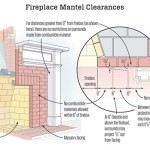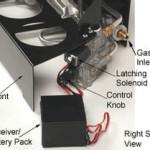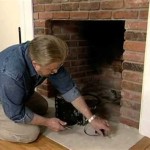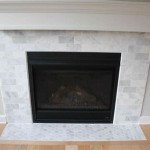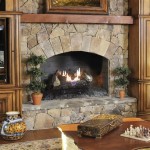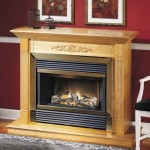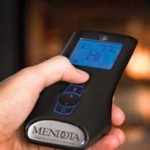Understanding the Gas Fireplace Thermopile: Powering Your Warmth
Gas fireplaces offer a convenient and aesthetically pleasing heating solution for many homes. Unlike traditional wood-burning fireplaces, they rely on a controlled gas flame to generate heat. A critical, often unseen, component in many gas fireplaces is the thermopile. This device is responsible for generating the electrical current needed to operate the gas valve and maintain the flame, thereby ensuring the fireplace functions correctly and safely.
The thermopile utilizes the principles of thermoelectricity to convert heat energy into electrical energy. This process is vital for fireplaces, especially those designed to operate independently of mains electrical power. Understanding how a thermopile works, its common issues, and the steps involved in troubleshooting and replacing it can significantly extend the lifespan of your gas fireplace and ensure its reliable performance during cold weather.
This article provides a detailed exploration of the gas fireplace thermopile, including its function, common problems, troubleshooting techniques, and replacement procedures. The information aims to equip homeowners and technicians with the knowledge needed to maintain and repair these essential components.
The Role of the Thermopile in Gas Fireplace Operation
At its core, a thermopile is a thermoelectric generator. It consists of multiple thermocouples connected in series, designed to convert thermal energy directly into electrical energy through the Seebeck effect. Each thermocouple is composed of two dissimilar metals joined at two junctions. When one junction is heated and the other remains cooler, a voltage difference is created between the two junctions. This voltage difference is proportional to the temperature difference between the hot and cold junctions. In a thermopile, the individual voltages produced by each thermocouple are combined to generate a larger, more usable voltage.
In a gas fireplace, the thermopile is typically positioned so that its hot junction is directly exposed to the pilot flame. The pilot flame continuously heats the hot junction, while the cold junction remains at ambient temperature. This temperature difference generates a small direct current (DC) voltage, typically in the range of 250 to 750 millivolts when the pilot light is burning correctly. This DC voltage is then used to energize the gas valve's electromagnet. The energized electromagnet holds the gas valve open, allowing gas to flow to the main burner. When the pilot flame is extinguished, the temperature difference across the thermopile decreases, the voltage drops, and the electromagnet releases, closing the gas valve and shutting off the gas supply. This inherent safety mechanism prevents the dangerous accumulation of unburned gas.
The thermopile's function is crucial for the fireplace's operation and safety. Without a properly functioning thermopile, the gas valve will not remain open, and the main burner will not ignite or will shut down prematurely. Therefore, it is essential to ensure the thermopile is correctly installed and maintained to guarantee the fireplace's reliable performance.
Common Thermopile Problems and Their Symptoms
Several factors can lead to thermopile failure or malfunction. Identifying these issues early can prevent more significant problems and ensure the fireplace operates safely and efficiently.
One common problem is soot buildup on the thermopile. The pilot flame, although designed to burn cleanly, can sometimes produce soot, especially if the gas pressure is not properly adjusted or if the pilot orifice is partially blocked. Soot accumulation insulates the thermopile from the flame, reducing its ability to generate voltage. The result is a weak or non-existent voltage output, preventing the gas valve from staying open. This often manifests as a pilot light that lights but goes out when the control knob is released.
Another common issue is physical damage to the thermopile. The thermopile is a relatively delicate component, and it can be damaged by physical impacts, corrosion, or overheating. Physical damage can break the internal connections within the thermocouples, leading to a drop in voltage output or complete failure. Corrosion, caused by moisture or acidic gases, can also degrade the thermopile's components, reducing its efficiency and lifespan. Overheating, often caused by a malfunctioning gas valve or improper installation, can damage the thermocouples and lead to premature failure.
A loose or corroded wiring connection can also cause problems with the thermopile. The thermopile is connected to the gas valve via electrical wiring. If these connections become loose or corroded, the electrical resistance increases, reducing the voltage reaching the gas valve. This can cause the gas valve to operate intermittently or not at all. Regular inspection and cleaning of the wiring connections are essential to prevent this issue.
Finally, the thermopile itself can simply wear out over time. The constant heating and cooling cycles can degrade the thermocouples, reducing their ability to generate voltage. The lifespan of a thermopile can vary depending on the quality of the component and the operating conditions, but typically, a thermopile will last for several years. However, under harsh conditions, it may fail sooner. Signs of a worn-out thermopile include a steadily decreasing voltage output over time, even when the pilot flame is burning correctly.
Troubleshooting and Replacing a Gas Fireplace Thermopile
Troubleshooting a gas fireplace thermopile involves a systematic approach to identify the root cause of the problem. A multimeter is an essential tool for this process. The first step is to inspect the thermopile for any visible signs of damage, such as cracks, corrosion, or soot buildup. Clean the thermopile with a soft brush to remove any soot or debris. Ensure the pilot flame is clean and blue, indicating proper combustion.
Next, use a multimeter to measure the output voltage of the thermopile while the pilot flame is burning. Disconnect the wires from the gas valve and connect the multimeter to the thermopile terminals. Turn the multimeter to the DC voltage setting and measure the voltage. A healthy thermopile should produce a voltage within the manufacturer's specifications, typically between 250 and 750 millivolts. If the voltage is significantly lower than the specified range, the thermopile is likely failing.
If the voltage is within the specified range, but the gas valve still does not stay open, the problem may lie with the gas valve itself or the wiring connections. Check the wiring connections for looseness or corrosion. Clean the connections with a wire brush and ensure they are securely attached. If the wiring is in good condition, the gas valve may be faulty and require replacement. It is generally recommended that gas valve replacement be performed by a qualified technician due to the inherent safety risks.
Replacing a thermopile is a straightforward process, but it is essential to follow safety precautions. Turn off the gas supply to the fireplace before beginning any repairs. Allow the fireplace to cool completely. Disconnect the wires from the old thermopile and remove the mounting hardware. Install the new thermopile, ensuring it is properly positioned in the pilot flame. Connect the wires to the gas valve, ensuring the connections are secure. Turn on the gas supply and test the fireplace to ensure it is functioning correctly. Verify that the pilot flame lights and remains lit when the control knob is released.
When selecting a replacement thermopile, it is crucial to choose a component that is compatible with the fireplace model. Refer to the fireplace's manual or contact the manufacturer to determine the correct thermopile specification. Using an incompatible thermopile can result in poor performance or even damage to the fireplace.
Regular maintenance, including cleaning the thermopile and inspecting the wiring connections, can extend the lifespan of the thermopile and prevent future problems. By understanding how a thermopile works and following the steps involved in troubleshooting and replacing it, homeowners can ensure their gas fireplaces operate safely and efficiently for years to come.

Thermo Thermopiles Friendly Fires

Gas Fireplace Won T Stay Lit Magic Touch Mechanical

Thermo Thermopiles Friendly Fires

How A Pilot Light Works Www Mygasfireplacerepair Com

Universal Thermopile Works With Most Gas Fireplaces Fire Parts Com

Gas Fireplace Won T Stay Lit Magic Touch Mechanical

Gas Fireplace Thermopile High Temperature Sensor Portable Heater Thermo Accessories Generator Replacement Thermocouple Resistant For Com

Gas Fireplace 24 Thermocouple 750 Millivolt Replacement Thermopile Thermogenerator Com

24 Gas Fireplace Thermopile Thermogenerator Pilot Generator

How The Fireplace Thermopile System Is Wired
Related Posts

